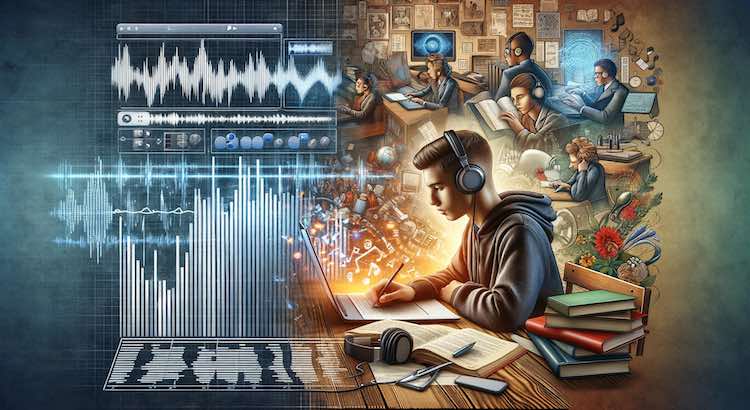Transcription Software vs. Human Transcribers in Education: Which Is More Accurate?
Transcribing lectures, seminars, and educational materials is essential for accessibility and effective learning. Today, schools and universities use both software and human transcribers to convert audio content into text. But which method provides the most accurate and reliable transcripts for students and educators?
The Growth of Transcription Software in Education
Transcription software has become common in classrooms, online courses, and universities. These tools use speech recognition algorithms to turn spoken words into written text almost instantly.
Transcription software benefits students who need accessible content and supports different learning styles. According to a 2023 survey, over 60% of colleges reported using some form of transcription service for lectures and events.
Advantages of Using Transcription Software
- Speed: Automated transcription can convert hours of audio to text in just minutes.
- Accessibility: Provides immediate transcriptions for students who are deaf or hard of hearing and those who process information better through text.
- Affordability: Automated software is typically less expensive than hiring human transcribers, especially when dealing with large volumes of audio.
- Convenience: Allows for on-demand use through an AI transcription subscription that supports frequent users.
Limitations of Transcription Software
- Accuracy Challenges: Automated tools still struggle with accents, technical vocabulary, and background noise, which leads to errors (Stanford, 2022).
- Lack of Nuance: Software often misses contextual meanings, emotions, or cultural references important in educational content.
- Quality Control: Transcripts may need extra proofreading or review for high-stakes uses like exams or research.
The Role of Human Transcribers in Education
Human transcribers listen to audio and type out what is spoken, using their understanding of context and subject-specific language. This personal touch often leads to higher accuracy.
In educational settings where details matter—such as medical seminars or legal lectures—human transcribers are often preferred for their reliability.
Advantages of Human Transcribers
- Superior Accuracy: Humans can handle various accents and technical terms much better than software (NPR, 2023).
- Context Awareness: People understand slang, emotion, and context, producing transcripts closest to the actual meaning of the lecture.
- Customizable Output: Human transcribers can format and structure transcripts for specific educational needs, making the material easier to use.
- Better for Noisy Audio: Humans use judgment to filter noise and focus on relevant speech, increasing accuracy.
Disadvantages of Human Transcribers
- Time-Intensive: Manual transcription takes longer. A 60-minute lecture may require 4–6 hours to transcribe accurately (Transcription Outsourcing, 2023).
- Higher Costs: Human transcription usually costs more than automated alternatives. Budget-focused schools may find it harder to use this option frequently. See current pricing for transcription to compare costs.
- Availability Issues: Scheduling conflicts may delay turnaround if there are not enough transcribers available.
Comparing Accuracy and Reliability
Research shows human transcribers are more accurate than software, especially when transcripts are needed for complex subjects or students with disabilities. In a 2021 study, human transcription accuracy for academic audio was over 99%, while speech recognition software ranged from 86% to 95% depending on the audio quality and content (Baylor University, 2021).
- For clear and simple audio, automated transcription works well and is more cost-effective.
- For low-quality recordings, technical lectures, or where precise accuracy is needed, human transcribers are still the gold standard.
Proofreading can improve automated transcripts, but it adds time and effort.
Which Is Best for Educational Settings?
The decision depends on several factors:
- Budget: Software is cheaper, but some transcription providers offer discounts or packages for bulk orders.
- Urgency: Automated tools deliver results quickly, while human transcribers may take several days.
- Complexity: Human transcribers are more accurate for specialized or nuanced content.
- Accessibility Needs: For official accommodations under the ADA, institutions often choose the most accurate method available, usually human transcription or a combination of both (EDUCAUSE, 2023).
Some schools use a hybrid approach: automated transcription for draft transcripts, then manual proofreading for final versions.
Making the Most of Transcription in Education
Transcription is not only about lectures. It also supports:
- Closed captioning for lectures and videos using closed caption services.
- Subtitles in multiple languages with subtitling services or text translation.
- Audio translation for international learners using an audio translation service.
Easy ordering and competitive captioning rates make these services accessible for schools of all sizes.
Conclusion: Improve Educational Access and Accuracy with GoTranscript
Automated transcription software brings speed and convenience to educational environments, while human transcribers ensure maximum accuracy and reliability. Each option has trade-offs. Schools and universities often combine both to balance speed, cost, and precision.
For any educational setting that needs fast, accurate, and affordable transcripts, GoTranscript offers a full range of solutions. From automated transcription and human transcription to captioning, subtitling, and translation services, GoTranscript helps improve learning for everyone. You can order transcription online or order captions at any time, ensuring your educational materials are accessible and accurate.
Choose the method that fits your needs—GoTranscript is here to help schools, colleges, and learners succeed.



















 Verified Order
Verified Order